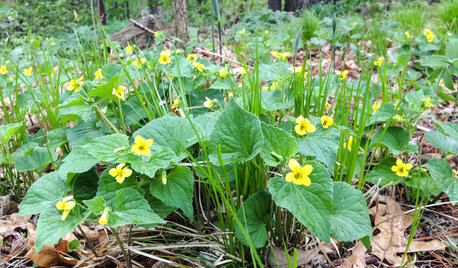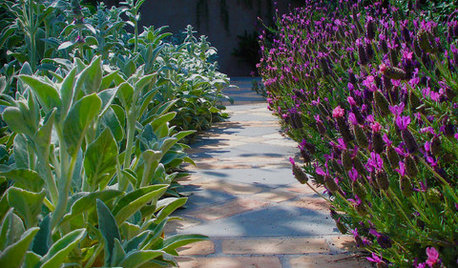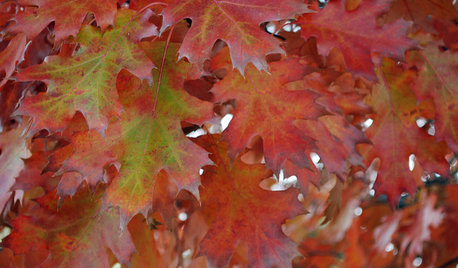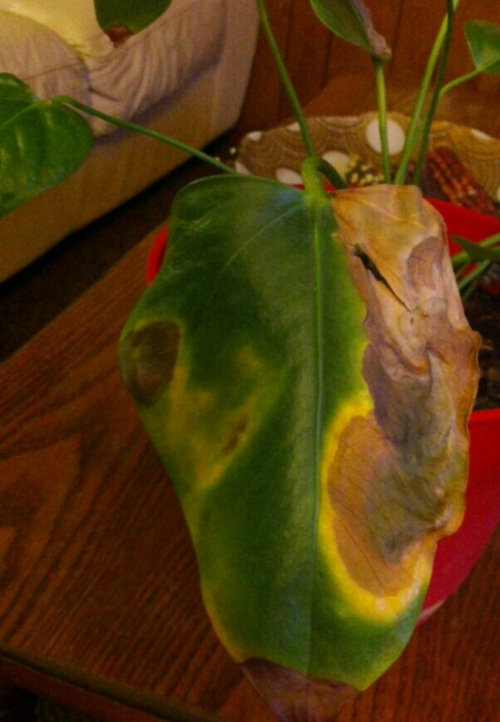yellow edges in leaves
mina84
9 years ago
Related Stories

DECORATING GUIDES9 Easy Ways to Decorate With Autumn Leaves
Give your home a burst of color that can be used Halloween through Thanksgiving
Full Story
GARDENING GUIDESWhat's Wrong With My Plant? Leaves Often Hold the Clues
Learn how to identify common plant ailments by reading their leaves
Full Story
REMODELING GUIDESInterior Brick: Paint it or Leave It?
Here's how to know if covering that brick is a sin or solution
Full Story
GARDENING GUIDESGreat Design Plant: Viola Pubescens Dots Woodlands With Yellow
Plant downy yellow violet in eastern U.S. woodland gardens for its heart-shaped leaves and bright yellow flowers
Full Story
LANDSCAPE DESIGNThe Garden Edge: Rethink Your Garden Pathways
The right plant choices not only frame your paths with distinction, but they also take you on a journey of the senses
Full Story
ECLECTIC HOMESHouzz Tour: Classic Spanish Style Gets a Modern Edge
Rounded curves, modern furniture and vintage ads mingle beautifully in a 1930s Los Angeles home
Full Story
EXTERIOR COLORWhen to Paint Your Home Yellow
Be a cheer leader with this color that captures the sun and radiates a warm welcome
Full Story
GARDENING GUIDES6 Healthy Ways to Handle Fallen Leaves
Once nature's beautiful bounty is spent, these ecofriendly strategies for leaves will put your yard in the clear
Full Story
FALL GARDENING5 Ways to Put Fall Leaves to Work in Your Garden
Improve your soil and yard the organic way with a valuable garden booster that grows on trees
Full Story
LAUNDRY ROOMSRoom of the Day: The Laundry Room No One Wants to Leave
The Hardworking Home: Ocean views, vaulted ceilings and extensive counter and storage space make this hub a joy to work in
Full StoryMore Discussions











Jason J
mina84Original Author
Related Professionals
Sahuarita Landscape Architects & Landscape Designers · Berwyn Landscape Contractors · Canby Landscape Contractors · Fort Myers Landscape Contractors · Lynwood Landscape Contractors · New Cassel Landscape Contractors · New Providence Landscape Contractors · North Canton Landscape Contractors · Pine Hills Landscape Contractors · St. Louis Landscape Contractors · Tustin Landscape Contractors · Wilsonville Landscape Contractors · North Hills Landscape Contractors · Aspen Hill Interior Designers & Decorators · Suisun City Interior Designers & Decoratorsmina84Original Author
mina84Original Author
mina84Original Author
tapla (mid-Michigan, USDA z5b-6a)
mina84Original Author
tapla (mid-Michigan, USDA z5b-6a)
petrushka (7b)
petrushka (7b)
tapla (mid-Michigan, USDA z5b-6a)
petrushka (7b)
tapla (mid-Michigan, USDA z5b-6a)
petrushka (7b)
petrushka (7b)
petrushka (7b)
petrushka (7b)
tapla (mid-Michigan, USDA z5b-6a)
petrushka (7b)
tapla (mid-Michigan, USDA z5b-6a)
LilBit7765
petrushka (7b)
tapla (mid-Michigan, USDA z5b-6a)
petrushka (7b)
tapla (mid-Michigan, USDA z5b-6a)
petrushka (7b)
petrushka (7b)
tapla (mid-Michigan, USDA z5b-6a)
petrushka (7b)
Loveplants2 8b Virginia Beach, Virginia